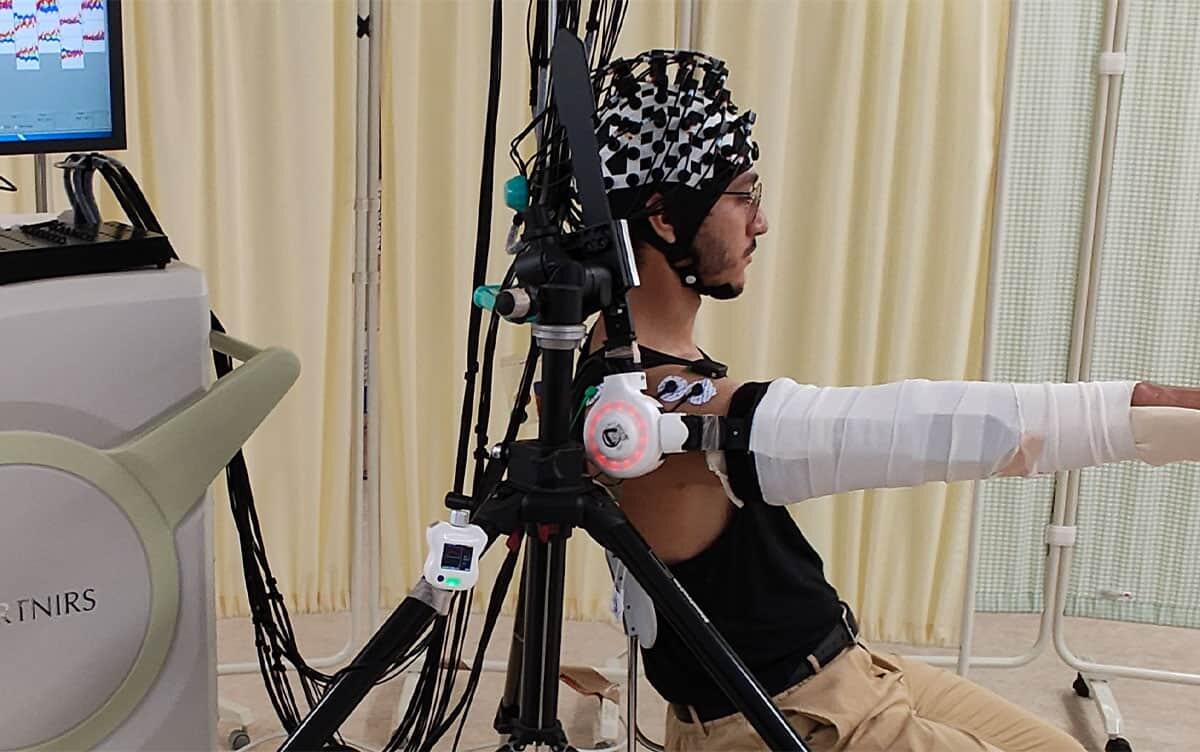Research News
Cyborg-type Robots Facilitate Neuroplasticity via Volitional Modulation

Researchers at University of Tsukuba demonstrated for the first time in the world that brain regions responsible for high-level motor planning and preparation, such as the premotor cortex, are activated when a cyborg-type robot is volitionally controlled. This was confirmed through real-time brain measurements during robot-assisted movement. Active rehabilitation using wearable robots that respond to the user's intention could promote neural plasticity and facilitate functional brain reorganization.
Tsukuba, Japan—Robots designed for neurorehabilitation, specifically for supporting arm and leg movement and motor relearning, are increasingly being adopted for individuals with limited limb mobility due to illness or injury. However, differences in brain responses between robot-driven passive movement and active, volitional control during robot-assisted active movement are poorly understood. Elucidating these differences is crucial for understanding the mechanisms of motor learning, neuroplasticity, and functional recovery.
In this study, the research team examined brain activity in healthy participants wearing a cyborg-type robot (Wearable Cyborg HAL®, CYBERDYNE Inc.) while raising their arms under three conditions. The first condition was robot-assisted active movement, where participants initiated arm movement while receiving robotic support. The second condition, robot-driven passive movement, involved the robot moving the arm without the participant's intention. The third condition was spontaneous movement, where the participant raised their arm unassisted. Functional near-infrared spectroscopy performed to measures changes in brain blood flow revealed significantly higher activity in the brain regions responsible for movement during active robot assistance and voluntary movement without robotic assistance. Specifically, higher-order motor areas, such as the prefrontal cortex and supplementary motor area, which are involved in planning and preparing movements, showed strong activity. However, when the arm was being completely robotically driven, brain activity on the same side as the moving arm and in higher-order motor areas was lower.
These results demonstrate that intention for voluntary movement is essential for eliciting broader brain activity and promoting brain learning and recovery in rehabilitation and robot-assisted therapy. Furthermore, the findings highlight the potential for cyborg-type rehabilitation technologies, which enable human-robot cooperative movement according to the wearer's intentions, thereby significantly transforming future medical care.
###
This work was supported in part by the Japanese Society for the Promotion of Science (JSPS) KAKENHI under Grant 23H00485 and Grant 23K25244. (Corresponding author: Margaux Noémie Lafitte.).
Original Paper
- Title of original paper:
- Cerebral correlates of robot-assisted upper limb motion driven by motor intention in healthy individuals: an fNIRS study
- Journal:
- IEEE Transactions on Neural Systems and Rehabilitation Engineering
- DOI:
- 10.1109/TNSRE.2025.3578796
Correspondence
Researcher
Dr. Margaux Noémie Lafitte
Institute of Systems and Information Engineering, University of Tsukuba
Related Link
Institute of Systems and Information Engineering




